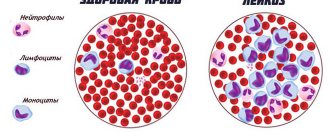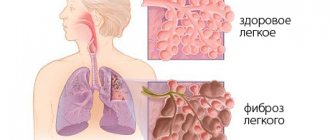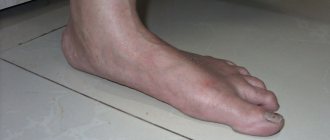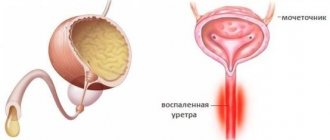Periodontitis is an inflammation that affects the area around the tooth (gums, bone tissue and muscle fibers). The risk of losing teeth is not just another horror story for dentists, but a real threat posed by this seemingly innocent phenomenon. The scale of its spread is amazing: 9 out of 10 people notice blood streaks in toothpaste while brushing their teeth, which means they have already developed one of the forms of this disease. Those who go to the dentist right away have a chance of successful treatment of periodontitis, and those who postpone the visit until better times will sooner or later have to choose the appropriate prosthetic option.
Where does periodontitis come from and how to recognize it?
The fact is that when eating or drinking water of questionable quality, a huge number of bacteria enter the oral cavity. For them, plaque is an ideal environment for life. When microbes settle on a tooth, they feel at ease, multiply and release toxins. The first to be affected is the mucous membrane, then the toxic waste products of pathological microorganisms penetrate into the gum tissue. If you don’t catch yourself in time and stop the process, treating periodontitis at home will no longer be possible. The inflammation will reach the bone tissue and then the problem can only be overcome through surgery.
The rate at which inflammation spreads is individual for everyone and depends on a number of personal circumstances. Thus, periodontitis will progress rapidly if the patient:
- there are deviations in the development of the dental system;
- weakened immunity;
- there is an acute lack of vitamins and minerals;
- any diseases of internal organs have been diagnosed;
- a lot of tartar;
- there is constant dry mouth.
Symptoms of periodontitis
It is easy to recognize the disease even at its initial stage. Bleeding gums at the slightest mechanical impact is the first and most obvious symptom. There is no point in hoping that everything will go away on its own over time. Day after day, the situation will only get worse and other signs will gradually make themselves felt:
- redness of the gums;
- swelling of the mucous membrane;
- painful discomfort from hot or cold food;
- a significant increase in layers of plaque and tartar;
- discharge of pus from foci of inflammation;
- putrid odor from the mouth;
- loss of taste.
By stubbornly ignoring these symptoms, the patient will sooner or later notice that one or more teeth have begun to become loose. Then problems arise with chewing food, and against the background of general malaise, the temperature may even rise. Treatment of periodontitis with antibiotics in this case is a common practice.
Treatment of periodontitis: 7 procedures that will help get rid of the problem
Unfortunately, it is impossible to cure periodontitis completely, to the point of completely healthy gums. But this does not mean that the disease does not need to be treated. The procedures below, if carried out in combination, will significantly improve the condition of the gums, relieve inflammation and even extend the life of mobile teeth. And the sooner treatment is started, the higher the chance that the teeth will last for several more decades.
It is customary to distinguish several stages of the disease. Localized affects one or several teeth, generalized spreads to a large number of elements of the dentition. Both can proceed either brightly, with all the symptoms, or without noticeable manifestations - when they become chronic.
Generalized chronic periodontitis (often progresses to periodontal disease) is an incurable disease. In this case, the best thing the patient can do for himself is to remove loose teeth and decide on implantation. The implant models used today prevent the process of gum inflammation and are fixed bypassing the atrophied areas of the bone. They also provide a high level of quality of life, allowing you to smile without embarrassment and eat any food, while this is not possible with bad teeth.
So, let's look at how such an unpleasant and even dangerous disease is treated.
Removing dental plaque
Removing plaque and tartar is the most important thing to do. It is the deposits that provoke inflammatory processes. By the way, professional cleaning of the oral cavity should be carried out for the sake of prevention - 1-2 times a year. The following methods are used for this:
- Ultrasound: the most common method for removing plaque. Through a special tip, ultrasonic vibrations along with a stream of water are applied to the teeth and gums. Ultrasound literally breaks the hard stone, and a stream of water washes it out of the mouth. Today, the most progressive clinics use Vector or Varius devices for these purposes. In some situations, they even allow you to do without surgical curettage of the gums,
- Air Flow: This technology involves sandblasting dental plaque using abrasive particles, air and water. Under high pressure, a stream is directed through the tip of the device onto the teeth and gums, effectively removing deposits, especially from hard-to-reach places. Often used in combination with ultrasound,
- manual removal: instruments with a hook at the end are used, with which the doctor picks up the hard stone located under the gums. This procedure is used quite rarely and mainly as an addition to ultrasonic cleaning,
- chemical removal: in the presence of very hard and abundant tartar, the doctor may resort to an acid-breaking procedure. This is a rather risky operation - if the acid gets on the gums or enamel, a burn may occur. However, sometimes chemical removal is the only way to get rid of solid deposits,
- laser: the most modern and safe, but expensive way to combat dental plaque. The laser not only effectively removes even hard stone, but also simultaneously allows for antibacterial cleansing of the oral cavity, significantly strengthening the enamel and inflamed gums.
Removing dental plaque
Surgical cleaning of gum pockets
Often, professional teeth cleaning may not be enough and a surgical procedure called gum curettage will be required. It is necessary in the presence of voluminous gum pockets, when plaque and tartar are located deep under the gums and neither ultrasound nor laser simply “reaches” such remote areas. In addition, the doctor carries out the cleaning almost blindly, without seeing how deep the deposits are located.
The purpose of curettage is to remove gum pockets. The doctor has an important task - to make sure that the gums fit tightly to the tooth again, and there are no conditions for the re-development of infection. Curettage is performed under local anesthesia.
- at open curettage The gum is cut and peeled off from the surface of the tooth - this opens up access to all dental deposits. They are removed, the surface of the tooth is carefully polished, and if necessary, artificial synthetic bone can be planted to compensate for the loss of natural bone. Then the gum returns to its place, stitches are applied,
Open gum curettage - at closed curettage The gums are not cut, and the tartar is removed using hook instruments. This is effective if the periodontal pockets are not too deep - no more than 3 mm.
Closed gum curettage
Simultaneously with open curettage, a flap operation can be performed, the purpose of which is to correct the position of the enlarged gum.
Video: closed gum curettage
Drug therapy
Carried out to relieve inflammation. Local remedies are used (rinses, compresses, baths), as well as general effects (medicines). For rinsing, medicinal solutions are used that reduce inflammation and eliminate pathogenic microflora (Chlorhexidine, Miramistin). Herbal decoctions (oak bark, chamomile, sage), which effectively eliminate bleeding gums, and ointments (Metrogil Denta) also help well.
Herbal infusions can effectively combat gum inflammation
An integral part of treatment is also taking antibacterial and anti-inflammatory drugs to relieve inflammation and eliminate pathogenic microbes.
Physiotherapy
The combination of drug therapy and physiotherapy also gives fairly good results in the treatment of periodontitis. To relieve inflammatory processes, reduce pain and bleeding, ultraviolet light, magnetic therapy, electrophoresis, darsonvalization and massage are used. As for massage, it can be performed both in a clinic (vacuum method) and independently. You can massage your gums with your finger in a circular motion, with a soft toothbrush, or by directing a weak stream of irrigator.
Treatment of periodontitis with ultraviolet light
One of the most popular physiotherapy procedures is ultrasonic influence – Vector and Varius devices are used for this. They allow you to simultaneously remove dental plaque and heal soft tissues.
Splinting teeth
The purpose of this procedure is to strengthen mobile teeth to prevent their loss. Loose teeth are combined into groups with healthy ones - for these purposes, a fiberglass thread or splint is used, which is fixed on the inside of the teeth in a pre-prepared groove. The thread is covered with a composite material on top, so it becomes completely invisible - it is not felt and does not cause discomfort.
Splinting teeth
If a certain number of teeth are missing in the oral cavity, then removable clasp dentures can play the role of a splint. They are equipped with a metal base and hooks - unlike soft nylon ones, such dentures have a strong design, which allows them to be used simultaneously to replace lost teeth and fix mobile ones.
Video: splinting teeth
Careful hygiene
As we mentioned at the beginning, periodontitis in most cases occurs due to poor care of teeth and gums. Therefore, in order to maintain the results of the treatment, it is important for the patient to regularly, correctly and thoroughly care for his teeth and gums, especially since this is not at all difficult.
You need to use the brush and paste 2 times a day: in the morning before breakfast and in the evening after all meals. The brush should have medium-hard bristles, even if you have inflamed gums - too soft simply won’t cope with plaque. During the treatment of periodontitis, it is worth using special medicinal pastes that help reduce the signs of gum inflammation. After 1-2 months they should be changed to preventive ones.
Oral hygiene is the key to healthy teeth and gums
After eating, you need to use dental floss and rinse, otherwise food debris will turn into plaque, causing inflammation. Using an irrigator will be useful - at home, it allows you to do an excellent job of cleaning the interdental spaces and even massage the gums, restoring metabolic processes in the tissues.
To maintain oral health, it is necessary not only to take care of your teeth and gums yourself, but also to have them professionally cleaned 1-2 times a year. This will get rid of accumulated plaque and will be an excellent prevention of relapses of periodontitis.
In order to speed up the healing process of gums and bone tissue, reduce the manifestations of inflammation, and activate cell growth, so-called platelet injections are used, which are created on the basis of the patient’s blood.
Dental implantation for periodontitis.
Unfortunately, it is impossible to completely cure periodontitis and the disease will periodically return with new intensity. Losing teeth is inevitable, it’s only a matter of time - you may have to resort to an unpleasant procedure after decades, but there are situations when, due to tissue destruction, it is impossible to fix the teeth and the easiest way is to remove them. Naturally, after this the question of prosthetics arises. For a long time it was believed that implantation and periodontal inflammation are incompatible things. However, today dental implantation is carried out quite successfully even in cases of acute periodontitis, and often it is the replacement of natural teeth with artificial analogues that allows you to get rid of the manifestations of the disease forever. In case of tissue inflammation, it is worth choosing methods with immediate loading of the prosthesis, since the implants in this case are fixed in the deep parts of the bone (they are not subject to inflammatory processes). And after installing artificial teeth and chewing load (it becomes possible the very next day after installing the implants), metabolic processes in the jaw bone and gum tissue are restored.
Dental implantation with Nobel Zygoma implants
As you can see in the picture, with periodontal disease in the upper jaw, patients may be offered the option of zygomatic implantation. This technique involves, in addition to the implantation of classic implants using the spongy layer, several zygomatic models, incredibly long, but at the same time very effective. You can notice that they bypass the nasal sinuses at an angle, and are attached to the cheek bone, which is very strong and protected from any inflammation. On the same day, a permanent, functional prosthesis is fixed on them, ensuring the stability of the entire structure with the help of a metal component.
As for the treatment of periodontitis at home, rinsing with medicinal herbs is quite acceptable. But this in no way can be a substitute for professional treatment - self-medication may alleviate the condition a little, but it will not get rid of the inflammatory process, which means tissue infection will continue to progress.
Notice
: Undefined variable: post_id in
/home/c/ch75405/public_html/wp-content/themes/UltraSmile/single-item.php
on line
45 Notice
: Undefined variable: full in
/home/c/ch75405/public_html/wp-content /themes/UltraSmile/single-item.php
on line
46
Rate this article:
( 16 ratings, average: 4.69 out of 5)
gum disease
Consulting specialist
Nemeev Semyon Vladimirovich
Doctor rating: 9.2 out of 10 (5) Specialization: Implant surgeon, orthopedist Experience: 21 years
Types and stages of the disease
Periodontitis is different from periodontitis. It is not for nothing that the treatment of some patients is limited to special toothpaste and rinses, while others are forced to go through all the circles of hellish trials and experience the procedure of curettage - manual cleaning of gum pockets, which, even with proper pain relief, causes a lot of unpleasant emotions.
Based on the stage of inflammation, periodontitis can be:
- acute – occurs overnight due to mechanical impact (strong impact, incorrectly installed crown or filling) and is easily eliminated;
- chronic - inflammation occurs due to the development of pathological microflora, accompanied by bleeding, abscesses, and burning. Treatment of chronic periodontitis is necessarily medicinal and rather lengthy.
Depending on the size of the inflammatory focus, the diagnosis is classified as:
- localized - this means that the problem is currently concentrated only around one or several molars, which means it is not difficult to eliminate;
- generalized - inflammatory processes cover the entire jaw. In that case, jokes aside. Folk remedies and rinses will no longer be able to influence this situation. To preserve the patient’s native dentition, one will have to use heavy artillery – laser, ultrasound, antibiotics and, most likely, surgical intervention cannot be avoided.
Considering how long the patient delayed seeing a doctor, there are different degrees of advanced periodontitis.
- Mild - the gums are already bleeding, but the teeth are still firmly in their places. If periodontal pockets appear, their depth does not exceed 3.5 mm.
- Medium – inflammation has managed to worsen the situation with the pockets. At this stage, their depth can already reach half a centimeter. The patient himself may notice that individual molars have begun to wobble a little.
- Severe - a protracted inflammatory process has led to the fact that swelling of the mucous membrane is already visible to the naked eye. The teeth became mobile, and some even shifted. Pus is released from the periodontal pockets.
You can try to eliminate the problem yourself using folk remedies only at a mild stage of the disease, as long as it is localized.
Features of hygiene for periodontitis
Special therapeutic and prophylactic toothpastes and rinses will help you cope with the disease faster. They may contain antiseptics, herbal and antimicrobial components. Asepta and Malavit Dent toothpastes have a good healing effect . They contain natural extracts of propolis, mint, and cedar, which help restore the structure of soft tissues and eliminate signs of inflammation. If antiseptics in the form of gels or rinsing solutions are already used for treatment, for dental hygiene you should choose a toothpaste without the addition of disinfectants, so as not to provoke a disruption of the natural microflora of the oral cavity. The duration of use of anti-inflammatory toothpastes should not exceed 2-3 weeks.
Periodontitis is a serious dental disease that is twice as likely as caries to lead to tooth loss. It must be treated in a timely manner, without waiting for the pathology to transform into a purulent form. If you cannot cope with the problem at home within 5-7 days, you should consult a doctor. Modern treatment methods make it possible to cope with even severe forms of periodontal disease without pain or discomfort. You will learn how to treat a tooth at home on our website.
The most effective recipes for periodontitis
Massages, lotions and rinses are how you can solve the problem of bleeding gums yourself.
Pine rinse
All you need to stock up on to prepare it is 2 tablespoons of pine needles. They need to be washed and filled with two glasses of water. After which all this is sent to the stove, brought to the boiling stage and left on low heat for about another 5 minutes. It is better to strain the resulting decoction from the remnants of pine needles and, in fact, that’s all - the homemade rinse is ready for use for medicinal and preventive purposes three times a day.
Oak bark decoction
This option is especially effective during exacerbations of the problem, as it can quickly relieve inflammation. To get this life-saving remedy, pour 1 tablespoon of carefully crushed oak bark with water (about 400 ml). Place it all on the stove, wait until it boils, and then keep it on low heat for a couple more minutes. Strain through several layers of gauze and rinse to your health! It is advisable to do this at least 3 times a day, that is, after each main meal.
Tincture of lingonberry leaves and marsh calamus
Don't let the names of the plants scare you - these are well-known medicinal herbs that can be easily purchased at the pharmacy. To prepare the drug, you only need a tablespoon of each ingredient. But only the method of preparing this rinse is slightly different from the previous two. There is no need to boil the potion, just pour two glasses of hot water over the herbs. As soon as it cools down, the tincture is ready for use as intended, but it is better to strain it before doing so. Now the main thing is not to forget to rinse your mouth regularly, at least three times a day.
Lotions and gum massage
Treatment of localized periodontitis can begin with compresses that are applied directly to the inflamed area. Making them couldn’t be easier: moisten a regular cotton pad with a few drops of Kalanchoe juice and wrap it in a thin layer of bandage (so that cotton fibers don’t get into the wound). Apply a compress to the area that is bothering you with bleeding. After an hour, the cotton swab can be taken out.
To make a lotion, one hour will not be enough. Take a bandage and soak it in the infusion of coltsfoot, calendula or St. John's wort. Twist a long thin tourniquet, apply it to the gum and go to bed. The lotion should remain on the mucous membrane all night.
Massaging your gums will help improve blood circulation and avoid the possibility of abscesses. Make two bandages and place them on your index fingers. Now moisten the gauze with a small amount of peach or fir oil and massage the gums, alternating point and rotation movements, for 2-3 minutes. The optimal time of day for periodontal massage is morning and evening.
“You can use folk remedies both for the treatment of mild periodontitis and for prevention. In this case, it is better to alternate recipes every 2 weeks.”
Alternative medicine recipes
The following recipes cannot be used as the primary treatment for periodontal disease. They can only be used as part of combination therapy to increase the effectiveness of the methods used. If visible improvements do not appear within 3-5 days, you should stop home treatment and consult a doctor.
Beetroot pulp
This is one of the easiest and fastest ways to cope with periodontal inflammation at home. Beetroot pulp contains natural anti-inflammatory and antibacterial substances and helps improve the patient's condition after 1-2 days of use.
Beetroot pulp contains natural anti-inflammatory and antibacterial substances
To get beet pulp, you need:
- Wash and peel medium beets;
- pass it through a meat grinder or grind it in a blender;
- Squeeze the resulting mass through cheesecloth (put the juice in the refrigerator).
What remains in the gauze after squeezing the juice is beet pulp. It is used for medicinal compresses: wrap a small amount of cake in gauze and apply to the inflamed gum for 12-15 minutes. The procedure needs to be carried out 3-4 times a day. Duration of therapy is two weeks.
Advice! The treatment will be more effective if, after removing the compress, you rinse your mouth with beetroot juice. Before use, you need to keep it at room temperature for a while.
Saffron lotions
Saffron is the stigma of the purple crocus, which in dried form is widely used in cooking and folk medicine. You can buy saffron at a pharmacy, and residents of Dagestan, Crimea or Azerbaijan can also use freshly harvested raw materials. The plant grows only in countries with a warm, sunny climate and normal humidity, so wild saffron is almost never found in Russia.
Saffron lotions are an effective remedy in the treatment of periodontitis.
To cure periodontitis with saffron, you must:
- mix a teaspoon of chopped saffron with a small amount of any vegetable oil (about a third of a spoon);
- Wrap a little mixture in gauze and apply to the site of inflammation for 15-20 minutes.
Such lotions should be done 2-3 times a day. The last procedure is recommended to be carried out after evening brushing. Seven days of daily treatment is usually enough to completely get rid of the problem.
Symptoms of periodontitis
Video: Folk remedy for periodontitis
Can periodontitis be cured with peroxide?
Treatment of periodontitis with hydrogen peroxide is one of the most popular methods among that category of patients who categorically refuse to solve the problem within the walls of the dental office, but at the same time do not trust folk recipes at all. In fairness, it must be said that those of them who undertook to treat inflammation in its early stages are for the most part satisfied with the effectiveness of this remedy. Which, however, is not surprising, because peroxide is an excellent antiseptic, so it is quite logical to use it in the fight against pathological microbes and bacteria.
When peroxide comes into contact with blood, a biochemical reaction occurs. As a result, water and oxygen are released, which saturate the cells of periodontal tissues. This in itself stimulates metabolism and prevents inflamed areas from festering.
There are three main methods of such treatment.
- Wiping Dip a sterile cotton sponge into a three percent solution of hydrogen peroxide and thoroughly wipe the gums with it from the inside and outside - localized foci of the disease will immediately stop bleeding. To consolidate the effect, you need to wipe your mouth at least twice a day.
- Rinse To prepare the rinse, you will need 2 hydroperite tablets, which you need to throw into a half-full glass of boiled water, cooled to room temperature. You should remember to rinse your mouth with this solution every 5-6 hours.
- Cleaning You can not only rinse your gums with peroxide, but also brush your teeth. Squeeze a pea of toothpaste onto the brush (it is better to choose medicated toothpastes against bleeding), and drop a little three percent solution on top of it with a pipette (literally 0.1 ml, that’s 2-3 drops). Brush your teeth, paying special attention to periodontal tissues, every time after breakfast and dinner. You can prepare toothpaste for periodontal disease yourself from the products available in every housewife’s kitchen - soda and lemon. To do this, take half a teaspoon of soda (no more than 3 grams), add 10 drops of fresh lemon juice to it, stir, and then drop 1 ml (about 20 drops) of the same three percent hydrogen peroxide solution. Use what you get to brush your teeth, but not as usual - don’t rinse your mouth. After this, refrain from food and drinks for the first quarter of an hour.
Stages and degrees
Considering the degree of damage to the soft tissues by the inflammatory process, the following stages of periodontitis are distinguished:
| Name | Description |
| Acute | In most cases, the main cause is mechanical damage to the gums. The symptoms are pronounced. Chronic periodontitis can be successfully treated with timely treatment at the hospital. |
| Chronic | Pathological processes arise against the background of the negative influence of pathogenic microflora. Severe periodontitis requires long-term and complex treatment. |
Periodontitis (treatment at home is carried out after a full medical examination based on the results obtained) has a certain classification, taking into account its severity:
| Name | Description |
| Lightweight | A pathological condition in which bleeding appears in the gums and there is no tooth mobility. A person complains of slight discomfort while brushing his teeth. |
| Average | Periodontitis is accompanied by the formation of pockets up to 0.5 mm in size. Teeth begin to loosen. Partitions are destroyed. Unpleasant sensations appear when teeth come into contact with cold or hot foods. |
| Heavy | Soft tissues are destroyed, which can be seen visually. A specific plaque and tartar appears on the teeth. Pockets more than 6 mm deep are formed, where food debris gets in and provokes the development of a purulent process. There is a gradual death of periodontal tissue. |
In any situation, the help of a dentist is necessary. Timely therapy will save teeth and prevent negative consequences.
Drug treatment of periodontitis
For those who do not want to spend time preparing solutions and decoctions, pharmacological companies offer a wide range of drugs for the drug treatment of periodontitis. Of course, before running to the pharmacy for a life-saving tube, visiting a doctor is strictly necessary. Only a dentist can diagnose and prescribe any of the medications listed below.
Instead of lotions and compresses, periodontists most often prescribe special local gels and ointments to their patients. Their task is to relieve inflammation, disinfect blood lesions and strengthen blood vessels. The list of the most popular drugs includes the following names.
- Metrogyl denta. A gel whose operating principle is based on two components - an antiseptic (chlorhexidine) and an antibiotic (metronidazole). It must be applied locally to the site of inflammation for 2 weeks.
- Parodium. It not only stops bleeding, but also promotes the rapid restoration of periodontal tissues. This gel contains chlorhexidine, but in addition it also contains formaldehyde and rhubarb root extract. Treatment occurs according to schedule: three times a day for at least three weeks.
- Levomekol. Two-component ointment: the antibiotic chloramphenicol kills harmful microorganisms, the growth stimulator methyluracil starts the process of regeneration of damaged cells. Apply the ointment to the inflamed area twice a day until the symptoms of the disease cease to bother you.
- Ortofen. The active ingredient - ortofen - is only 2% in the ointment, but this is enough to relieve inflammation. It is not recommended to apply the drug directly to the gums. Ortofen is used to lubricate a gauze pad, which is placed on the bleeding area. This should be done every morning and evening for 10 days.
Modern treatment of periodontitis is also not complete without antiseptics. If they are not included in the ointment or gel, they are prescribed additionally. It could be:
- Chlorophyllipt is a potent substance, 1% solution is enough to kill even those microbes that are not susceptible to attack by antibiotics;
- Miramistin - destroys not only pathogenic bacteria, but also fungi, so it is prescribed if it is necessary to disinfect a festering lesion;
- Dimexide - has not only an antiseptic, but also an anti-inflammatory effect.
Treatment of periodontitis has a higher chance of success if carried out in a complex manner. Therefore, in addition to dental ointments, gels and antiseptics, doctors prescribe vitamins to their patients: Vitrum, Centrum, Sana-Sol, AlfaVit.
To prevent periodontal disease, dentists recommend taking a full course of multivitamins 3-4 times a year.
Modern methods of treating periodontitis with laser and ultrasound
The laser beam, in combination with chlorophyll, has a surprisingly beneficial effect on periodontal tissue. In modern dentistry, this method is called photodynamic therapy and its essence is as follows.
- Chlorophyll, a concentrated plant pigment, is applied to the entire gum area. It takes about 30 minutes to penetrate the cells of pathogenic microorganisms and paint the areas where they accumulate with a characteristic green tint.
- After half an hour, the laser beam gets to work. Under its influence, chlorophyll breaks down and oxygen is released during this biochemical reaction. Oxidation has a detrimental effect on bacteria - they are literally destroyed from the inside.
- Thus, the laser beam absolutely painlessly removes tissue affected by inflammation and closes not too deep periodontal pockets (we are talking about eliminating the symptoms of mild and moderate periodontitis).
Another way to get rid of pathogenic microflora accumulated in gum pockets is ultrasound. Treatment of periodontitis with the Vector device is based on this principle. During the procedure, a special therapeutic mixture of fluoride and calcium is supplied through the device into the pocket. Under the influence of ultrasonic waves, microparticles of this very mixture vibrate and destroy the biofilms in which bacteria live. There are many advantages to this innovative method, but there are 5 main ones:
- it doesn't hurt at all;
- no need for anesthesia, which is especially important for pregnant women, nursing mothers, and the elderly;
- you can clean and close the pocket, which has already grown to 11 mm in depth, which means there is a real chance to avoid surgery;
- ultrasound deals a crushing blow not only to pathogenic microflora hidden in the depths of periodontal tissues, but also to dental calculus;
- The recovery period is short and painless.
Of course, the decision regarding the treatment of severe periodontitis is made by the doctor, based on the specific clinical picture. In some advanced cases, even the most modern therapy is powerless and there is nowhere to go - you have to resort to surgical intervention. Bone tissue augmentation, splinting, implantation - all these are quite expensive procedures that require remarkable endurance and patience of the patient. So make it a rule to carefully monitor the condition of your gums. Prevention and treatment of periodontitis in the early stages will allow you to get by with little blood, save a lot of money and effort, and most importantly, save your natural teeth.
Sources used:
- Treatment of diseases of gums and teeth using traditional and non-traditional methods / E.L. Isaeva
- Diseases of the endodont, periodontium and oral mucosa: monograph. / Edited by A.K. Jordanishvili. — M.: MEDpress-inform
- Periodontal diseases / V.S. Ivanov. - Moscow
Symptoms of periodontitis, photos
With careful attention to oral health and regular visits to the dentist, you can promptly notice the first signs of the development of periodontitis:
- putrid odor from the mouth;
- bleeding gums when brushing teeth;
- weak swaying of the teeth;
- increased sensitivity of enamel to hot and cold foods;
- the appearance of a soft yellowish coating at the bottom of the crown.
If periodontitis is detected early, it can be treated at home. If you ignore the signs of disease, periodontal pockets will continue to grow, which can lead to infection spreading deeper into the tooth – to its root.
With further development of the pathology, the painful perception of hot and cold food by the periodontium increases, deformation of the interdental septa begins, and the following signs appear:
- accumulation of pus in dental pockets;
- exposure of roots;
- severe loosening of teeth and the appearance of gaps between them;
- deformation of the dentition.
For moderate and severe periodontitis, the help of a periodontist is required, which consists of cleaning periodontal pockets from tartar and pus, splinting mobile teeth or surgical intervention.
Photo: moderate periodontitis
Photo: advanced periodontitis
Additional signs of the disease are:
- discomfort when chewing food;
- cyanotic tint of dental papillae;
- abscesses and fistulas in the oral cavity;
- saliva viscosity;
- decreased level of jaw bone tissue;
- pulsation in the gums;
- enlargement of the submandibular lymph nodes;
- headache.
Severe periodontitis is fraught with tooth loss and the development of periodontal disease, a pathology accompanied by atrophy of the alveolar process of the jaw. This disease is not attributed to inflammatory manifestations, but to systemic periodontal damage.











